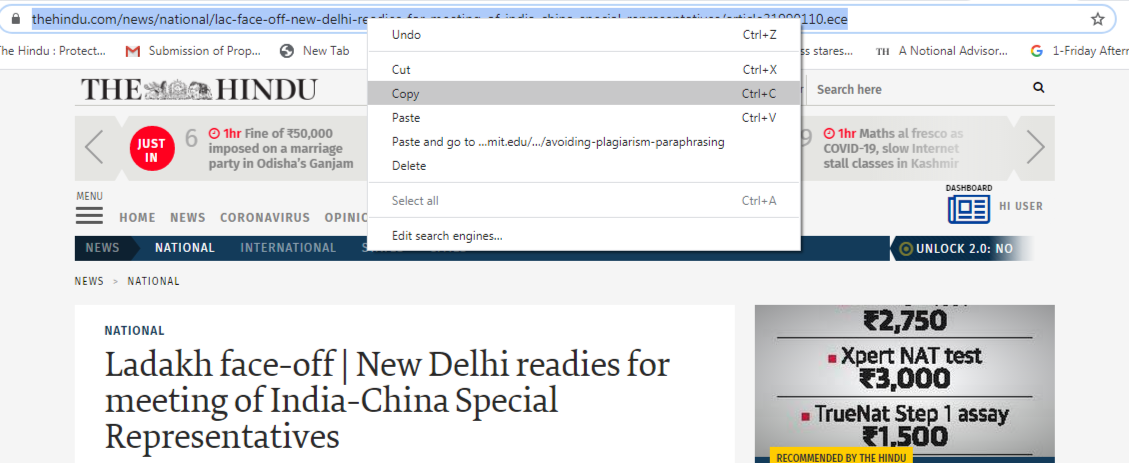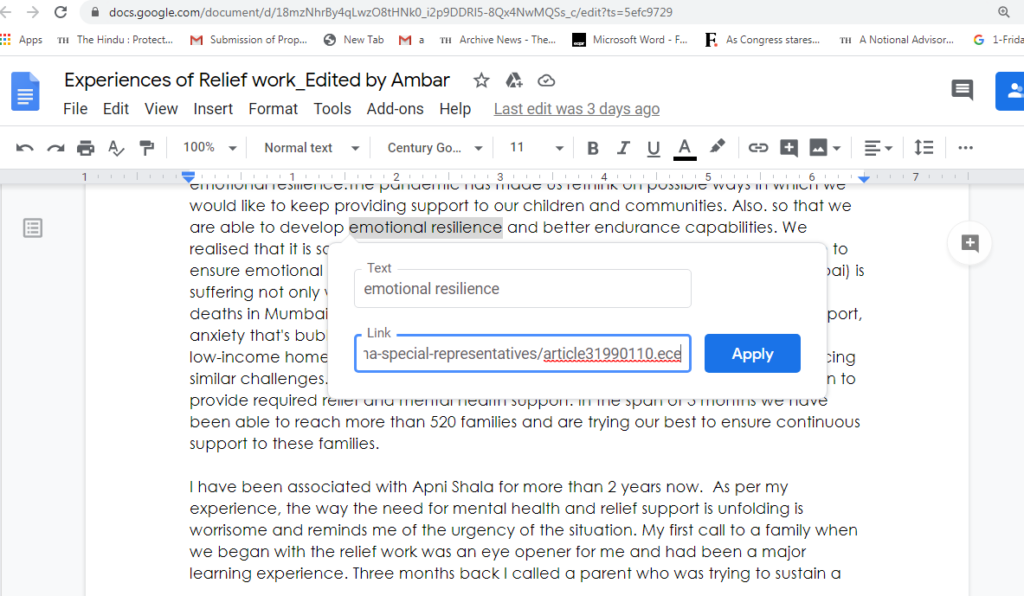Write For Us
Anyone can write for us on any topics related to life. We aspire to be accessible to all and hope to publish as many as we can.
Email your submissions to [email protected] based on the following guidelines. Details of our writing/style guide are discussed below. The broad sequence of discussion is as follows:
- Sending your article
- If you do not know how to go about writing, we have made some writing guidelines
- For references in articles, we follow the APA format as discussed below
- Guide to insert hyperlinks in your submissions
- The reference article for submission is here
Sending your submission
- Read the guidelines on writing, references, and hyperlinks thoroughly before sending your writings. Use either the hyperlinks method, the references method, or a mix of both for your references.
- Our lower word limit is strictly 1000 words. Try to keep your write-up below 2000 words.
- Every submission should have a title, which should also be used as the file name, and the subject of the email you are going to send us.
- Send the submission as a google doc to [email protected].
- Do not attach more than one writing to an email. Send separate emails for separate writings.
- We do not accept articles that are already published elsewhere in other magazines, personal blogs, or social media channels (Ex: LinkedIn, Medium).
Writing guidelines
Any kind of research-based, analytical, academic, fictional, and personal narrative-based submissions are welcome. The writers are required to keep some basic guidelines for writing.
- While selecting a topic to write, the writer should ask oneself why the writer wants to pen down the prospective article. What is the purpose, motivation, or significance of the article? These questions can help build a focused argument/theme.
- A short piece should try to confine the article to a few specific aspects of a certain topic/issue. One single article cannot address all the aspects together. So, confining and limiting the arguments in the writing makes the article precise and pointed.
- Using simple words, short sentences and paragraphs make an article more easily intelligible to the readers. Using short and sharp sub-themes in the body of the article wherever possible can help the reader to understand the piece better.
- A forward-looking, analytical, or speculative conclusion can make the piece more insightful, wherever possible. Reiteration of the central theme/argument/idea/emotion in the end that was introduced in the introduction would maintain the focus of the article.
- It is very natural if the writings are influenced by the biases of the writers many times. So, it is important to be factual and try to substantiate or convincingly frame every argument made in the write-up.
Note: These are mere suggestions that the writers might find useful to start writing. These guidelines are not final, absolute, and binding upon the writers as they are free to adopt their own style of writing based on their own experience and skillsets. The Journal respects the autonomy and choice of the writers in this regard.
Inserting hyperlinks
When you want to mention articles on other magazines as a reference, hyperlink/keyword the phrase to the target article. Here’s a step-wise guide to the hyperlink if you are using a google doc:
- Copy the link of the article/report/paper that you want to use as your reference in the hyperlink.

- Select the particular word or phrase in google doc where you want to insert the particular link for reference.

- After you select the word or phrase, use right-click to find a drop-down menu where you will find the link option. Click on “link”.

- Paste the copied link of your reference article in the link box and select the “apply” button. The hyperlink will be created.

Citing your references
All articles that you want to publish on the platform are to be referenced. Refer this article to understand how the referencing looks. Do not provide footnotes in your submission. We follow APA format as elaborated below.
Books format
Author’s last name, first initial. (Publication date). Book title. Additional information. City of publication: Publishing company.
Examples
- Allen, T. (1974). Vanishing wildlife of North America. Washington, D.C.: National Geographic Society.
- Boorstin, D. (1992). The creators: A history of the heroes of the imagination. New York: Random House.
- Nicol, A. M., & Pexman, P. M. (1999). Presenting your findings: A practical guide for creating tables. Washington, DC: American Psychological Association.
- Searles, B., & Last, M. (1979). A reader’s guide to science fiction. New York: Facts on File, Inc.
- Toomer, J. (1988). Cane. Ed. Darwin T. Turner. New York: Norton.
Magazine & Newspaper Articles format
Author’s last name, first initial. (Publication date). Article title. Periodical title, volume number(issue number if available), inclusive pages.
Note: Do not enclose the title in quotation marks. Put a period after the title. If a periodical includes a volume number, italicize it and then give the page range (in regular type) without “pp.” If the periodical does not use volume numbers, as in newspapers, use p. or pp. for page numbers. Unlike other periodicals, p. or pp. precedes page numbers for a newspaper reference in APA style.
Examples
- Harlow, H. F. (1983). Fundamentals for preparing psychology journal articles. Journal of Comparative and Physiological Psychology, 55, 893-896.
- Henry, W. A., III. (1990, April 9). Making the grade in today’s schools. Time, 135, 28-31.
- Kalette, D. (1986, July 21). California town counts town to big quake. USA Today, 9, p. A1.
- Kanfer, S. (1986, July 21). Heard any good books lately? Time, 113, 71-72.
- Trillin, C. (1993, February 15). Culture shopping. New Yorker, pp. 48-51.
Website or Webpage formats
Online periodical
Author’s name. (Date of publication). Title of the article. Title of Periodical, volume number, Retrieved month day, year, from full URL
Online document
Author’s name. (Date of publication). Title of work. Retrieved month day, year, from full URL
Note: When citing Internet sources, refer to the specific website document. If a document is undated, use “n.d.” (for no date) immediately after the document title. Break a lengthy URL that goes to another line after a slash or before a period. Continually check your references to online documents. There is no period following a URL. If you cannot find some of this information, cite what is available.
Examples
- Devitt, T. (2001, August 2). Lightning injures four at music festival. The Why? Files. Retrieved January 23, 2002, from http://whyfiles.org/137lightning/index.html
- Fredrickson, B. L. (2000, March 7). Cultivating positive emotions to optimize health and well-being. Prevention & Treatment, 3, Article 0001a. Retrieved November 20, 2000, from http://journals.apa.org/prevention/volume3/pre0030001a.html
- GVU’s 8th WWW user survey. (n.d.). Retrieved August 8, 2000, from http://www.cc.gatech.edu/gvu/usersurveys/survey1997-10/
- Health Canada. (2002, February). The safety of genetically modified food crops. Retrieved March 22, 2005, from http://www.hc-sc.gc.ca/english/protection/biologics_genetics/gen_mod_foods/genmodebk.html
Note: If a document is contained within a large and complex website (such as that for a university or a government agency), identify the host organization and the relevant program or department before giving the URL for the document itself. Precede the URL with a colon. Here is an example:
Dove, R. (1998). Lady freedom among us. The Electronic Text Center. Retrieved June 19, 1998, from Alderman Library, University of Virginia website: http://etext.lib.virginia.edu/subjects/afam.html

